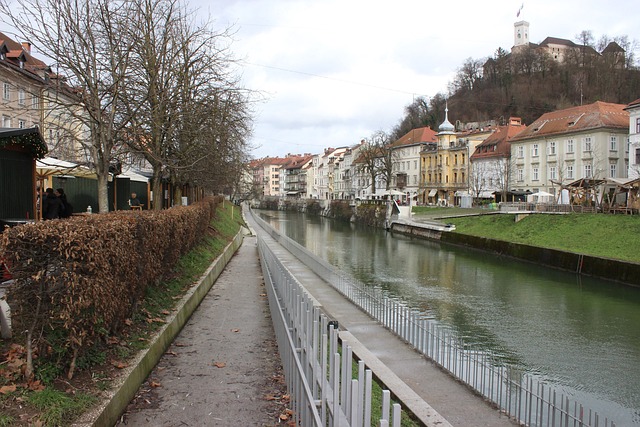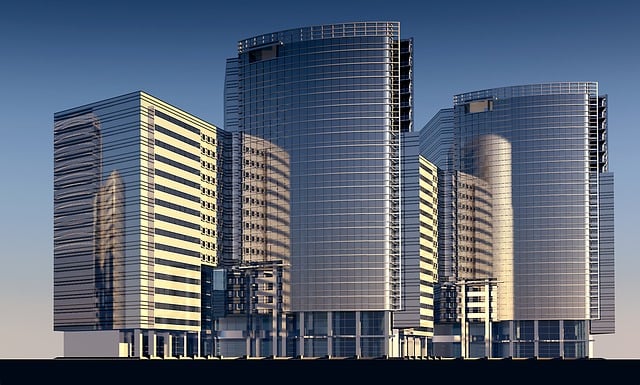Karachi, Pakistan's economic hub, faces unique traffic challenges due to rapid urbanization, dense population, and increasing vehicle ownership. Key thoroughfares like Stadium Road experience heavy congestion near intersections and bridges, influenced by daily commutes, market activities, and events. Effective urban planning requires understanding these patterns to optimize traffic management, alleviate congestion, and improve accessibility. Historical evolution shows Stadium Road's transformation from residential to bustling hub, now addressing severe congestion through smart city initiatives: BRT services, real-time traffic management, dedicated lanes, and technology integration for safer, greener mobility solutions in this dynamic metropolis.
“Karachi, Pakistan’s vibrant metropolis, faces significant traffic challenges, particularly on Stadium Road, a key urban artery. This article offers a comprehensive overview of the complex traffic patterns in Karachi, delving into the impact of Stadium Road on urban mobility and its historical evolution. We explore the challenges, from congestion to infrastructure limitations, and present potential solutions, focusing on smart city initiatives for efficient traffic management. By understanding the past and present, we chart a path towards a future where Karachi’s traffic flows seamlessly.”
- Understanding Traffic Patterns in Karachi: A Comprehensive Overview
- The Impact of Stadium Road on Urban Mobility
- Historical Evolution: How Stadium Road Shape Karachi's Transportation
- Challenges and Solutions: Managing Congestion Along Stadium Road
- Future Prospects: Smart City Initiatives for Efficient Traffic Management in Karachi
Understanding Traffic Patterns in Karachi: A Comprehensive Overview

Karachi, Pakistan’s economic hub and one of the most populous cities in the world, presents unique traffic challenges. Understanding its traffic patterns is crucial for efficient urban planning and mobility solutions. The city’s dense population, rapid urbanization, and a growing number of vehicles contribute to complex road networks with significant congestion during peak hours.
Traffic flows in Karachi are heavily influenced by key factors such as daily commutes, market and commercial activities, and special events. Major thoroughfares like Stadium Road experience heavy volumes, especially near intersections and bridges that serve as vital links between different areas. By studying these patterns, authorities can implement strategic measures to optimize traffic management, reduce congestion, and enhance overall accessibility in this bustling metropolis.
The Impact of Stadium Road on Urban Mobility

Stadium Road, a significant thoroughfare in Karachi, has had a profound impact on the city’s urban mobility landscape. Its construction and subsequent development have transformed travel patterns, offering both efficient transportation options and unique challenges. The road serves as a vital link between various parts of the metropolis, facilitating smoother movement of vehicles and people. With its strategic location, it connects major commercial hubs, residential areas, and recreational facilities, making it an indispensable corridor for daily commuters and visitors alike.
The impact extends beyond mere connectivity; Stadium Road has also influenced the overall traffic flow dynamics in Karachi. The road’s capacity and design have encouraged the adoption of public transportation, reducing congestion on other routes. However, the increasing volume of traffic has also led to concerns about air quality and road safety. As a result, urban planners must continuously evaluate and optimize traffic management strategies to ensure that Stadium Road remains a viable and sustainable solution for Karachi’s evolving mobility needs.
Historical Evolution: How Stadium Road Shape Karachi's Transportation

Stadium Road, a bustling thoroughfare in Karachi, has witnessed a remarkable historical evolution that has significantly shaped the city’s transportation landscape. Initially, what was once a quiet residential area gave way to the construction of the iconic stadium, becoming a central hub for sports and cultural events. This shift led to an increase in foot traffic and vehicular movement along the road, setting the stage for its transformation into a major transportation artery.
Over time, as Karachi’s population grew, so did the need for efficient connectivity. Stadium Road became a strategic link between different parts of the metropolis, facilitating easier access to nearby areas. The historical evolution of this road reflects the city’s development, from its humble beginnings to becoming a vibrant, bustling center, contributing immensely to Karachi’s overall transportation infrastructure.
Challenges and Solutions: Managing Congestion Along Stadium Road

In Karachi, Stadium Road is a vital artery that connects various parts of the city, especially during major sporting events and festivals. However, this road also faces significant congestion issues due to high vehicle density and limited infrastructure. To manage this challenge, several strategies have been implemented. One key solution is the development of efficient public transport systems, such as bus rapid transit (BRT) services, which encourage residents to opt for alternative modes of travel, reducing private vehicle usage on Stadium Road.
Additionally, smart traffic management systems have been introduced to optimize signal timings and direct traffic flow more effectively. These technologies include advanced sensors and real-time data analysis to identify congestion hotspots and adjust signals accordingly. Furthermore, the establishment of dedicated lanes for public transport and emergency vehicles enhances overall road efficiency, ensuring a smoother experience for all users. These measures reflect Karachi’s commitment to addressing traffic congestion on Stadium Road and improving urban mobility.
Future Prospects: Smart City Initiatives for Efficient Traffic Management in Karachi

Karachi, as a rapidly growing metropolis, faces significant traffic congestion challenges. However, the future prospects for efficient traffic management lie in embracing smart city initiatives. By leveraging technology and data-driven insights, Karachi can transform its transportation infrastructure. Smart traffic signals, real-time traffic monitoring systems, and mobile applications that provide accurate travel times can significantly reduce travel times and enhance overall mobility.
These initiatives will not only ease congestion but also foster a more sustainable urban environment. Integrated public transport systems, including efficient bus rapid transit (BRT) networks and electric vehicle (EV) charging stations, are key components of this vision. Additionally, smart parking solutions and congestion pricing models can encourage the use of public transportation and reduce private vehicle reliance, making Karachi’s roads safer, greener, and more livable for its folks.
Karachi, as Pakistan’s bustling metropolis, faces unique traffic challenges, with Stadium Road being a significant artery. This article has explored various facets of urban mobility, from understanding traffic patterns to proposing future smart city initiatives. The historical evolution of Stadium Road highlights its pivotal role in shaping Karachi’s transportation network. While current congestion issues persist, the discussed strategies and innovative solutions offer hope for efficient traffic management. By leveraging technology and adopting sustainable practices, Karachi can enhance its urban mobility, ensuring a smoother journey for its folks in the years to come.
